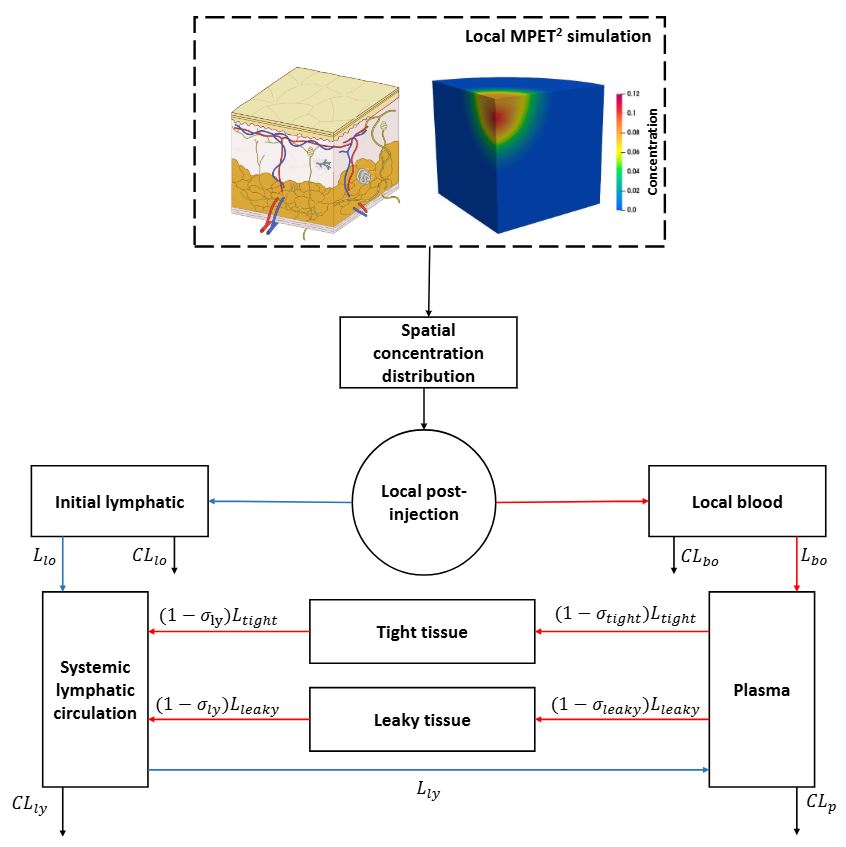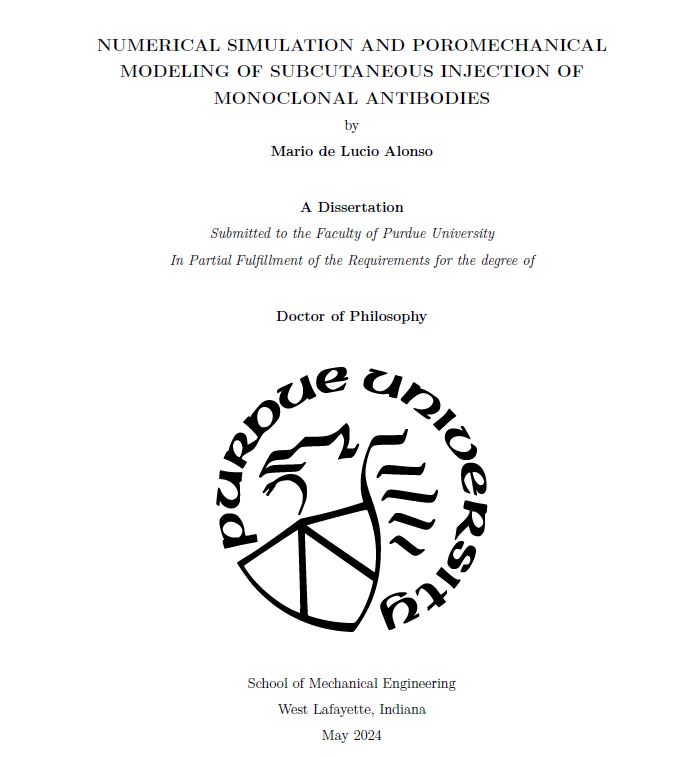Publications
Ordered by most recent.
2025
-
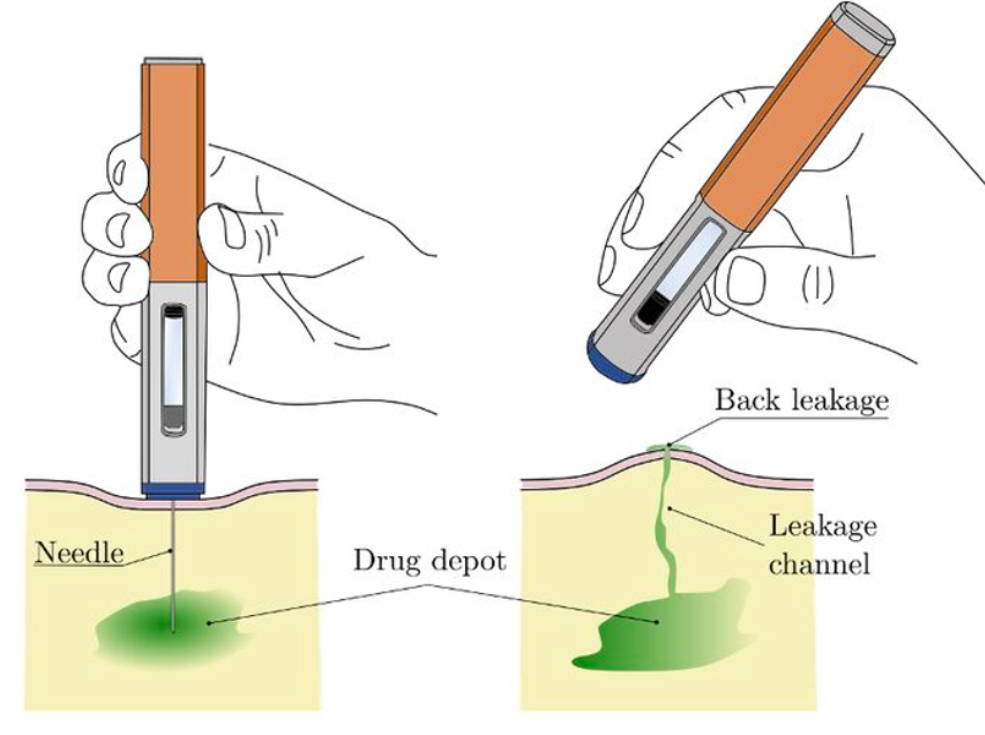 Mario de Lucio, Pavlos P Vlachos, and Hector GomezAvailable at SSRN, 2025
Mario de Lucio, Pavlos P Vlachos, and Hector GomezAvailable at SSRN, 2025Subcutaneous injection of biologics has become a viable alternative to intravenous infusion for treating diseases such as cancer, autoimmune disorders, and diabetes. However, some of the injected fluid can leak from the skin post-injection, a phenomenon known as leakage or backflow. This loss of medication may be significant and could impact drug efficacy. Despite its clinical relevance, there are currently no computational models capable of predicting drug leakage dynamics. In this work, we develop a high-fidelity computational framework to model leakage during subcutaneous injection. The model is validated against experimental data on tissue swelling and leakage dynamics for different injection devices. We then use it to assess the influence of key parameters, including injection depth, injection volume, needle gauge, injection site, and wait time.
@article{delucio2025leakage, title = {A Computational Framework for Predicting Leakage in Subcutaneous Injections}, journal = {Available at SSRN}, author = {{de Lucio}, Mario and Vlachos, Pavlos P and Gomez, Hector}, year = {2025}, doi = {10.2139/ssrn.5353991}, url = {https://ssrn.com/abstract=5353991} } -
 Mario de Lucio, Jacobo Diaz, Alberto de Castro, and Luis E. RomeraarXiv, physics.med-ph, 2025
Mario de Lucio, Jacobo Diaz, Alberto de Castro, and Luis E. RomeraarXiv, physics.med-ph, 2025Abdominal aortic aneurysms (AAAs) are localized dilations of the abdominal aorta that can lead to life-threatening rupture if left untreated. AAAs predominantly affect older individuals, with a high mortality rate upon rupture, making early diagnosis and risk assessment critical. The geometric characteristics of an AAA, such as its maximum diameter, asymmetry, and wall thickness, play a crucial role in biomechanical models used to assess rupture risk. Despite the growing use of computational modeling to study AAAs, there is a lack of open source software that facilitates the generation of simulation-ready geometries tailored for biomechanical and hemodynamic analyses. To address this need, we introduce AneuPy, an open-source Python-based tool designed to generate idealized and patient-specific AAA geometrical models. AneuPy provides an efficient and automated approach to aneurysm geometry generation, requiring minimal input data while allowing for flexible parameterization. By streamlining the creation of simulation-ready geometries for finite element analysis (FEA), computational fluid dynamics (CFD), or fluid-structure interaction (FSI) models, AneuPy aims to facilitate research in AAAs and enhance patient-specific risk assessment.
@article{delucio2025aneupyopensourcepython, title = {AneuPy: An open source Python tool for creating simulation-ready geometries of abdominal aortic aneurysms}, journal = {arXiv, physics.med-ph}, author = {{de Lucio}, Mario and Diaz, Jacobo and {de Castro}, Alberto and Romera, Luis E.}, year = {2025}, doi = {10.48550/arXiv.2504.15285}, url = {https://arxiv.org/abs/2504.15285} }
2024
- Hao Wang, Mario de Lucio, Tianyi Hu, Yu Leng, and 1 more authorComputer Methods and Programs in Biomedicine, 2024
Background and Objective: Subcutaneous injection of biotherapeutics has attracted considerable attention in the pharmaceutical industry. However, there is limited understanding of the mechanisms underlying the absorption of drugs with different molecular weights and the delivery of drugs from the injection site to the targeted tissue. Methods: We propose the MPET2-mPBPK model to address this issue. This multiscale model couples the MPET2 model, which describes subcutaneous injection at the local tissue scale from a biomechanical view, with a post-injection absorption model at the injection site and a minimal physiologically-based pharmacokinetic (mPBPK) model at the whole-body scale. Utilizing the principles of tissue biomechanics and fluid dynamics, the local MPET2 model provides solutions that account for tissue deformation and drug absorption in local blood vessels and initial lymphatic vessels during injection. Additionally, we introduce a model accounting for the molecular weight effect on the absorption by blood vessels and a nonlinear model accounting for the absorption in lymphatic vessels. The post-injection model predicts drug absorption in local blood vessels and initial lymphatic vessels, which are integrated into the whole-body mPBPK model to describe the pharmacokinetic behaviors of the absorbed drug in the circulatory and lymphatic system. Results: We establish a numerical model that links the biomechanical process of subcutaneous injection at the local tissue scale and the pharmacokinetic behaviors of injected biotherapeutics at the whole-body scale. With the help of the model, we propose an explicit relationship between the reflection coefficient and molecular weight and predict the bioavailability of biotherapeutics with varying molecular weights via subcutaneous injection. Conclusion: The considered drug absorption mechanisms enable us to study the differences in local drug absorption and whole-body drug distribution with varying molecular weights. This model enhances the understanding of drug absorption mechanisms and transport routes in the circulatory system for drugs of different molecular weights and holds the potential to facilitate the application of computational modeling to drug formulation.
@article{WANG2024108543, title = {A MPET2-mPBPK model for subcutaneous injection of biotherapeutics with different molecular weights: From local scale to whole-body scale}, journal = {Computer Methods and Programs in Biomedicine}, volume = {233}, pages = {108543}, year = {2024}, issn = {0169-2607}, doi = {10.1016/j.cmpb.2024.108543}, url = {https://www.sciencedirect.com/science/article/pii/S0169260724005364}, author = {Wang, Hao and {de Lucio}, Mario and Hu, Tianyi and Leng, Yu and Gomez, Hector}, keywords = {Multi-network poroelastic and transport model (MPET), Physiologically-based pharmacokinetics, Subcutaneous injection, Drug absorption, Molecular weight effect} } -
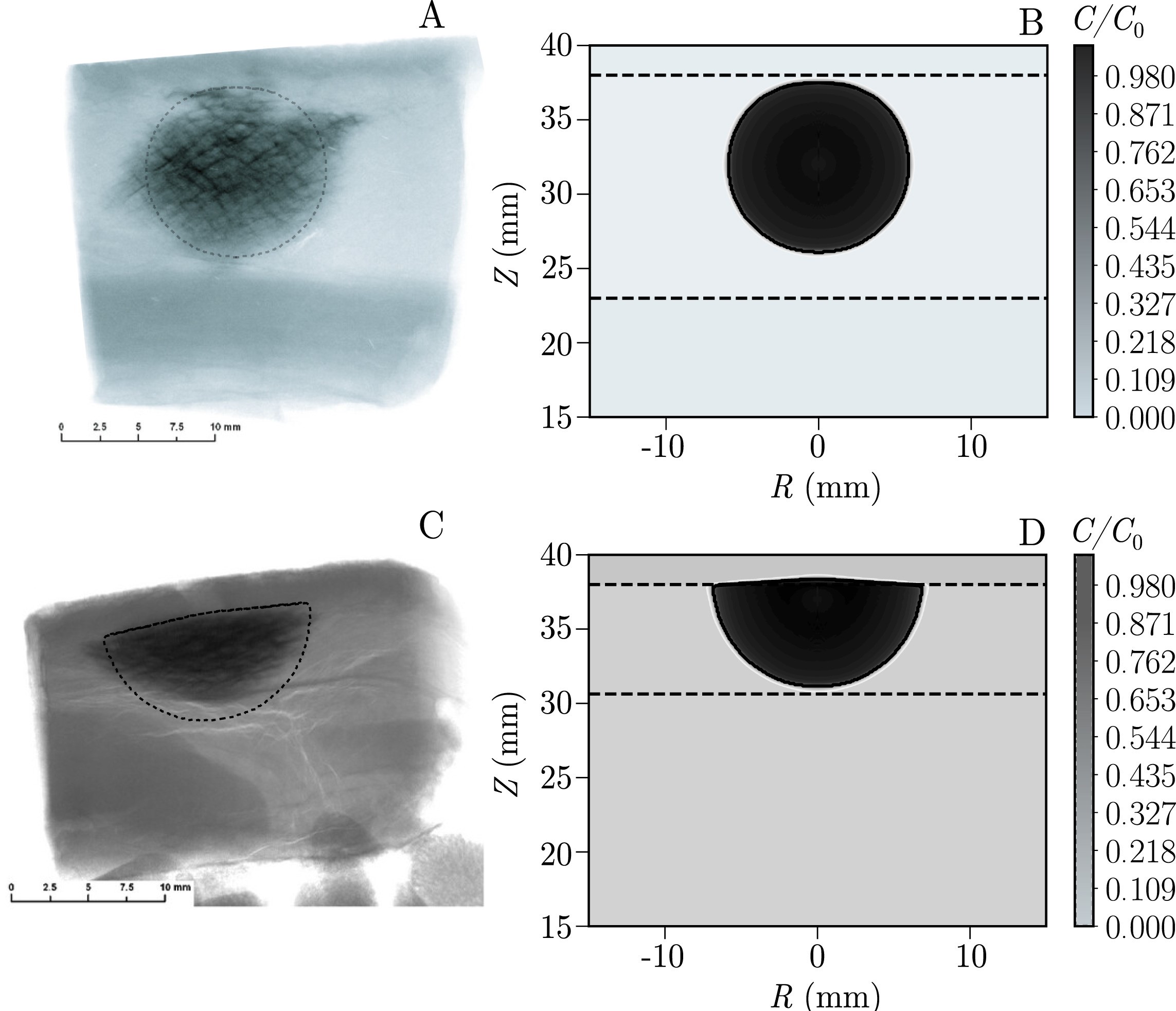 Mario de Lucio, Yu Leng, Hao Wang, Pavlos P. Vlachos, and 1 more authorInternational Journal of Pharmaceutics, 2024
Mario de Lucio, Yu Leng, Hao Wang, Pavlos P. Vlachos, and 1 more authorInternational Journal of Pharmaceutics, 2024The pharmaceutical industry has experienced a remarkable increase in the use of subcutaneous injection of monoclonal antibodies (mAbs), attributed mainly to its advantages in reducing healthcare-related costs and enhancing patient compliance. Despite this growth, there is a limited understanding of how tissue mechanics, physiological parameters, and different injection devices and techniques influence the transport and absorption of the drug. In this work, we propose a high-fidelity computational model to study drug transport and absorption during and after subcutaneous injection of mAbs. Our numerical model includes large-deformation mechanics, fluid flow, drug transport, and blood and lymphatic uptake. Through this computational framework, we analyze the tissue material responses, plume dynamics, and drug absorption. We analyze different devices, injection techniques, and physiological parameters such as BMI, flow rate, and injection depth. Finally, we compare our numerical results against the experimental data from the literature.
@article{deLucio5, title = {Modeling drug transport and absorption in subcutaneous injection of monoclonal antibodies: Impact of tissue deformation, devices, and physiology}, journal = {International Journal of Pharmaceutics}, pages = {124446}, year = {2024}, issn = {0378-5173}, doi = {https://doi.org/10.1016/j.ijpharm.2024.124446}, url = {https://www.sciencedirect.com/science/article/pii/S037851732400680X}, author = {{de Lucio}, Mario and Leng, Yu and Wang, Hao and Vlachos, Pavlos P. and Gomez, Hector}, keywords = {Subcutaneous injection, Poroelasticity, Auto-injector, Drug transport, Lymphatic uptake} } - Mario de LucioPurdue University Graduate School , 2024
Subcutaneous injection for self-administration of biotherapeutics, such as monoclonal antibodies (mAbs), is becoming increasingly prominent within the pharmaceutical sector due to its benefits in patient compliance and cost-effectiveness. The success of this drug delivery process depends on the coupled mechanical and transport phenomena within the subcutaneous tissue, both during and after the injection. Yet, the details of these processes are not well-elucidated, sparking a surge in computational efforts to fill this knowledge gap. Remarkably, there are very few computational studies on subcutaneous injection into three-dimensional porous media that account for large tissue deformations, drug transport and absorption, the use medical devices, and human factors. Here, we develop a high-fidelity computational framework to study large-volume subcutaneous injection of mAbs. Our investigation begins with a linear poroelastic model without drug transport, which we employ to study the effect of tissue deformation on injection dynamics. We progressively enhance this model, advancing to a nonlinear porohyperelastic framework that include drug transport and absorption. To capture the anisotropy of subcutaneous tissue, we employ a fibril-reinforced porohyperelastic model. Furthermore, we integrate the multi-layered structure of skin tissue by creating data-driven geometrical models of the tissue layers derived from histological data. Our analysis explores the impact of different handheld autoinjectors on the injection dynamics for various patient-applied forces. We investigate the effect of different pre-injection techniques, such as the pinch and stretch methods, on the drug transport and absorption. Additionally, we evaluate the impact of several physiological variables, including flow rate, injection depth, and body mass index. Our simulations yield crucial insights essential for comprehending and improving subcutaneous drug administration of mAbs. Additionally, they offer a deeper understanding of the human aspect of the injection procedure, thereby paving the way for advancements in the development of patient-centered injection devices and techniques.
@phdthesis{DeLucioThesis, url = {https://hammer.purdue.edu/articles/thesis/Numerical_Simulation_and_Poromechanical_Modeling_of_Subcutaneous_Injection_of_Monoclonal_Antibodies/25674240/1}, title = {Numerical Simulation and Poromechanical Modeling of Subcutaneous Injection of Monoclonal Antibodies}, author = {{de Lucio}, Mario}, school = {Purdue University Graduate School}, year = {2024}, doi = {https://doi.org/10.25394/PGS.25674240.v1} } -
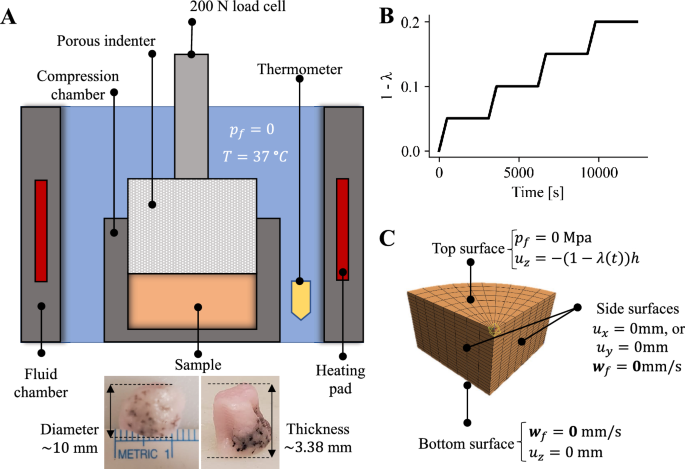 J. Barsimantov, J. Payne, Mario de Lucio, M. Hakim, and 3 more authorsAnn Biomed Eng, 2024
J. Barsimantov, J. Payne, Mario de Lucio, M. Hakim, and 3 more authorsAnn Biomed Eng, 2024Subcutaneous tissue mechanics are important for drug delivery. Yet, even though this material is poroelastic, its mechanical characterization has focused on its hyperelastic response. Moreover, advancement in subcutaneous drug delivery requires effective tissue mimics such as hydrogels for which similar gaps of poroelastic data exist. Porcine subcutaneous samples and gelatin hydrogels were tested under confined compression at physiological conditions and strain rates of 0.01% /s in 5% strain steps with 2600 s of stress relaxation between loading steps. Force-time data were used in an inverse finite element approach to obtain material parameters. Tissues and gels were modeled as porous neo-Hookean materials with properties specified via shear modulus, effective solid volume fraction, initial hydraulic permeability, permeability exponent, and normalized viscous relaxation moduli. The constitutive model was implemented into an isogeometric analysis (IGA) framework to study subcutaneous injection. Subcutaneous tissue exhibited an initial spike in stress due to compression of the solid and fluid pressure buildup, with rapid relaxation explained by fluid drainage, and longer time-scale relaxation explained by viscous dissipation. The inferred parameters aligned with the ranges reported in the literature. Hydraulic permeability, the most important parameter for drug delivery, was in the range (0.142,0.203) mm4/(N s). With these parameters, IGA simulations showed peak stresses due to a 1-mL injection to reach 48.8 kPa at the site of injection, decaying after drug volume disperses into the tissue. The poro-hyper-viscoelastic neo-Hookean model captures the confined compression response of subcutaneous tissue and gelatin hydrogels. IGA implementation enables predictive simulations of drug delivery.
@article{Jacques1, title = {Poroelastic Characterization and Modeling of Subcutaneous Tissue Under Confined Compression}, author = {Barsimantov, J. and Payne, J. and {de Lucio}, Mario and Hakim, M. and Gomez, H. and Solorio, L. and Tepole, A. B.}, journal = {Ann Biomed Eng}, year = {2024}, doi = {10.1007/s10439-024-03477-1}, publisher = {Springer} }
2023
-
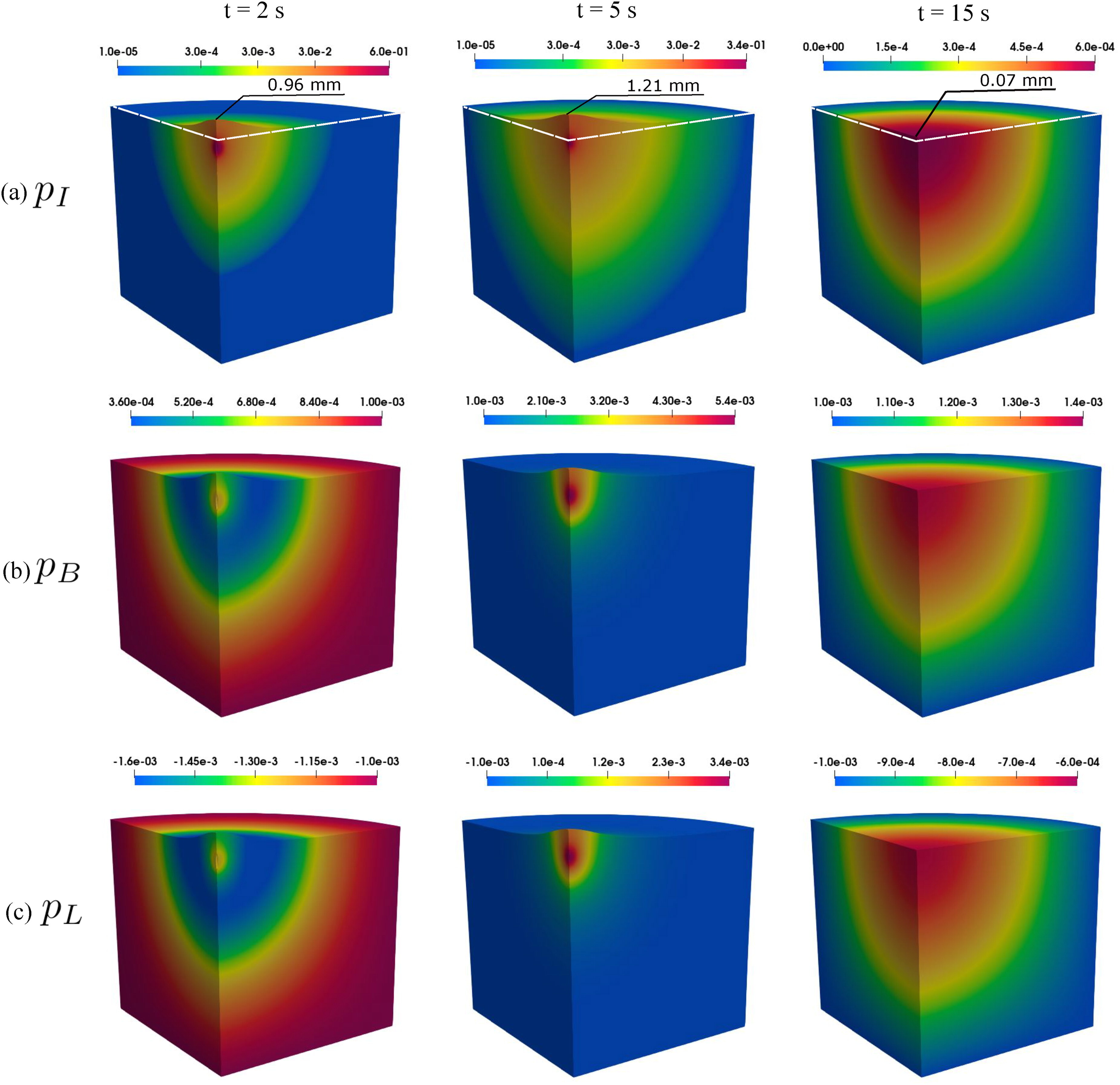 Hao Wang, Tianyi Hu, Yu Leng, Mario de Lucio, and 1 more authorDrug Delivery, 2023
Hao Wang, Tianyi Hu, Yu Leng, Mario de Lucio, and 1 more authorDrug Delivery, 2023Subcutaneous injection of monoclonal antibodies (mAbs) has attracted much attention in the pharmaceutical industry. During the injection, the drug is delivered into the tissue producing strong fluid flow and tissue deformation. While data indicate that the drug is initially uptaken by the lymphatic system due to the large size of mAbs, many of the critical absorption processes that occur at the injection site remain poorly understood. Here, we propose the MPET2 approach, a multi-network poroelastic and transport model to predict the absorption of mAbs during and after subcutaneous injection. Our model is based on physical principles of tissue biomechanics and fluid dynamics. The subcutaneous tissue is modeled as a mixture of three compartments, i.e., interstitial tissue, blood vessels, and lymphatic vessels, with each compartment modeled as a porous medium. The proposed biomechanical model describes tissue deformation, fluid flow in each compartment, the fluid exchanges between compartments, the absorption of mAbs in blood vessels and lymphatic vessels, as well as the transport of mAbs in each compartment. We used our model to perform a high-fidelity simulation of an injection of mAbs in subcutaneous tissue and evaluated the long-term drug absorption. Our model results show good agreement with experimental data in depot clearance tests.
@article{Hao2, author = {Wang, Hao and Hu, Tianyi and Leng, Yu and {de Lucio}, Mario and Gomez, Hector}, title = {{MPET2}: a multi-network poroelastic and transport theory for predicting absorption of monoclonal antibodies delivered by subcutaneous injection}, journal = {Drug Delivery}, volume = {30}, number = {1}, pages = {2163003}, year = {2023}, publisher = {Taylor \& Francis}, doi = {10.1080/10717544.2022.2163003} } -
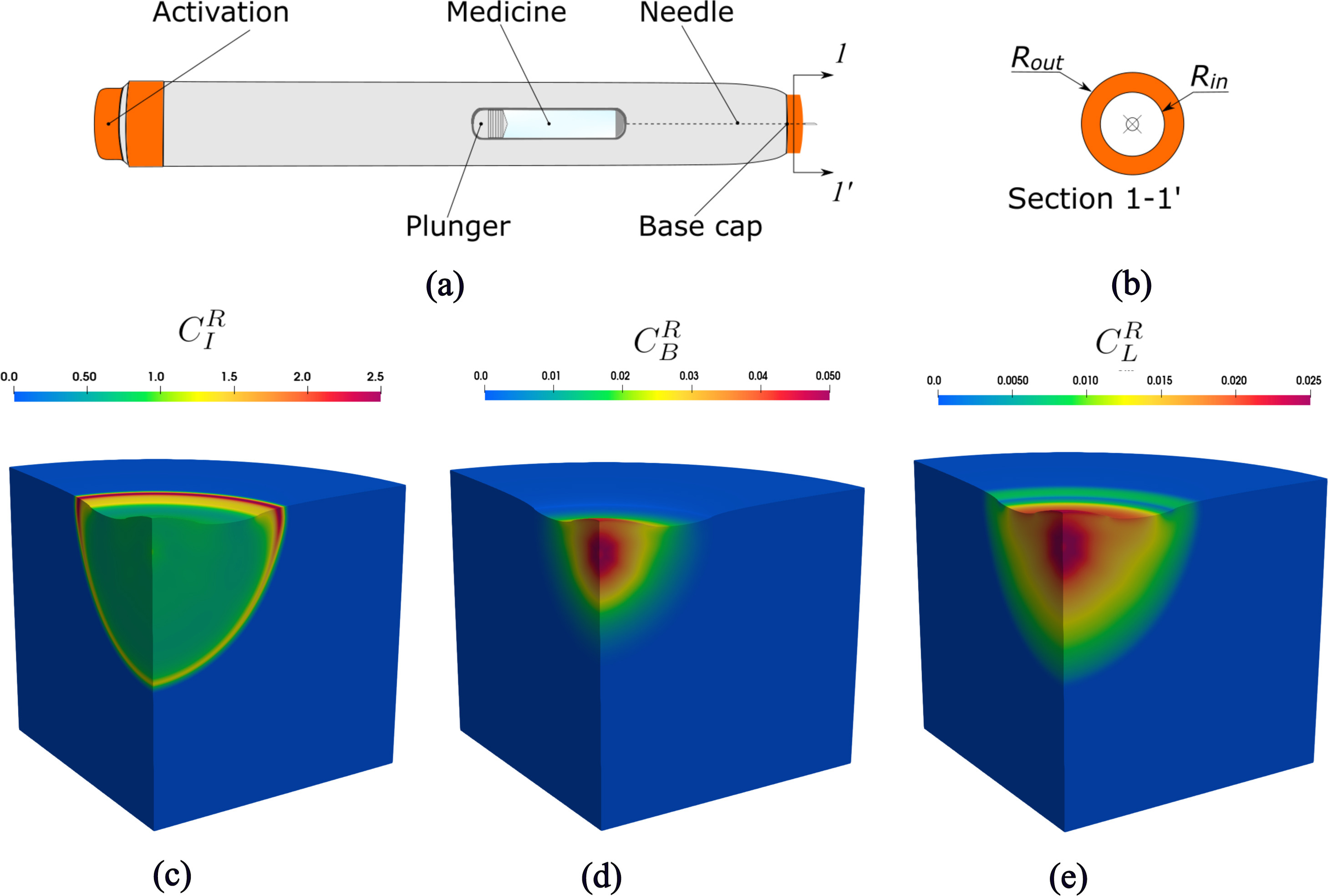 Hao Wang, Tianyi Hu, Yu Leng, Mario de Lucio, and 1 more authorComputer Methods in Applied Mechanics and Engineering, 2023A Special Issue in Honor of the Lifetime Achievements of T. J. R. Hughes
Hao Wang, Tianyi Hu, Yu Leng, Mario de Lucio, and 1 more authorComputer Methods in Applied Mechanics and Engineering, 2023A Special Issue in Honor of the Lifetime Achievements of T. J. R. HughesThe MPET2 model couples the multi-network poroelastic theory (MPET) with solute transport equations and provides predictions of the material deformation, fluid dynamics, and solute transport in different compartments of a deformable multiple-porosity medium. MPET2 offers a comprehensive framework for understanding complex porous media across multiple disciplines. Examples of its applications include studying rock formations, soil mechanics and subsurface reservoirs, investigating biological tissues, modeling groundwater flow and contaminant transport, and optimizing the design of porous materials. Despite the wide range of applications of the model, its numerical discretization has received little attention. Here we propose a stabilized formulation of the MPET2 model. To address the unique challenges posed by the discretization of the MPET2 model, we use multiple techniques including the Fluid Pressure Laplacian stabilization, Streamline Upwind Petrov–Galerkin stabilization, and discontinuity capturing. Our spatial discretization is based on Isogeometric Analysis with higher-order continuity basis functions. The fully discretized governing equations are solved simultaneously with a monolithic algorithm. We perform a convergence study of the proposed formulation. Then, we conduct a series of simulations of subcutaneous injection of monoclonal antibodies under different injection conditions. Our simulations show that the stabilized MPET2 formulation can provide oscillation-free solutions for tissue deformation, fluid flow in the interstitial tissue, blood vessels, and lymphatic vessels, drug absorption in blood vessels and lymphatic vessels, as well as drug transport in each compartment. We also study the effects of different injection conditions on drug absorption, showing the potential of the proposed model and algorithm in the future optimization of injection strategy.
@article{WANG2023116362, title = {Stabilized isogeometric formulation of the multi-network poroelasticity and transport model (MPET2) for subcutaneous injection of monoclonal antibodies}, journal = {Computer Methods in Applied Mechanics and Engineering}, volume = {417}, pages = {116362}, year = {2023}, note = {A Special Issue in Honor of the Lifetime Achievements of T. J. R. Hughes}, issn = {0045-7825}, doi = {https://doi.org/10.1016/j.cma.2023.116362}, url = {https://www.sciencedirect.com/science/article/pii/S0045782523004863}, urldate = {2023-06-04}, author = {Wang, Hao and Hu, Tianyi and Leng, Yu and {de Lucio}, Mario and Gomez, Hector}, keywords = {Multi-network poroelastic and transport model (MPET), Solute transport, Subcutaneous injection, Drug absorption, Isogeometric Analysis} } -
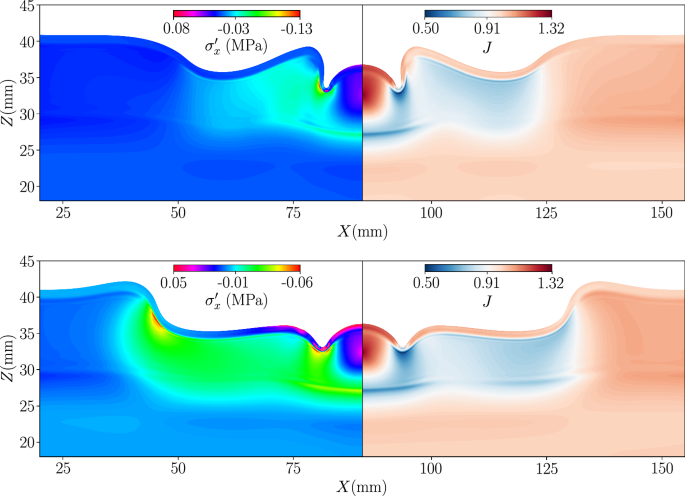 Mario Lucio, Yu Leng, Hao Wang, Arezoo M. Ardekani, and 3 more authorsBiomech Model Mechanobio, 2023
Mario Lucio, Yu Leng, Hao Wang, Arezoo M. Ardekani, and 3 more authorsBiomech Model Mechanobio, 2023Subcutaneous injection of monoclonal antibodies (mAbs) has experienced unprecedented growth in the pharmaceutical industry due to its benefits in patient compliance and cost-effectiveness. However, the impact of different injection techniques and autoinjector devices on the drug’s transport and uptake is poorly understood. Here, we develop a biphasic large-deformation chemomechanical model that accounts for the components of the extracellular matrix that govern solid deformation and fluid flow within the subcutaneous tissue: interstitial fluid, collagen fibers and negatively charged proteoglycan aggregates. We use this model to build a high-fidelity representation of a virtual patient performing a subcutaneous injection of mAbs. We analyze the impact of the pinch and stretch methods on the injection dynamics and the use of different handheld autoinjector devices. The results suggest that autoinjector base plates with a larger device-skin contact area cause significantly lower tissue mechanical stress, fluid pressure and fluid velocity during the injection process. Our simulations indicate that the stretch technique presents a higher risk of intramuscular injection for autoinjectors with a relatively long needle insertion depth.
@article{deLucio4, author = {de Lucio, Mario and Leng, Yu and Wang, Hao and Ardekani, Arezoo M. and Vlachos, Pavlos P. and Shi, Galen and Gomez, Hector}, title = {Computational modeling of the effect of skin pinch and stretch on subcutaneous injection of monoclonal antibodies using autoinjector devices}, journal = {Biomech Model Mechanobio}, year = {2023}, volume = {22}, pages = {1965--1982}, doi = {https://doi.org/10.1007/s10237-023-01746-x} } -
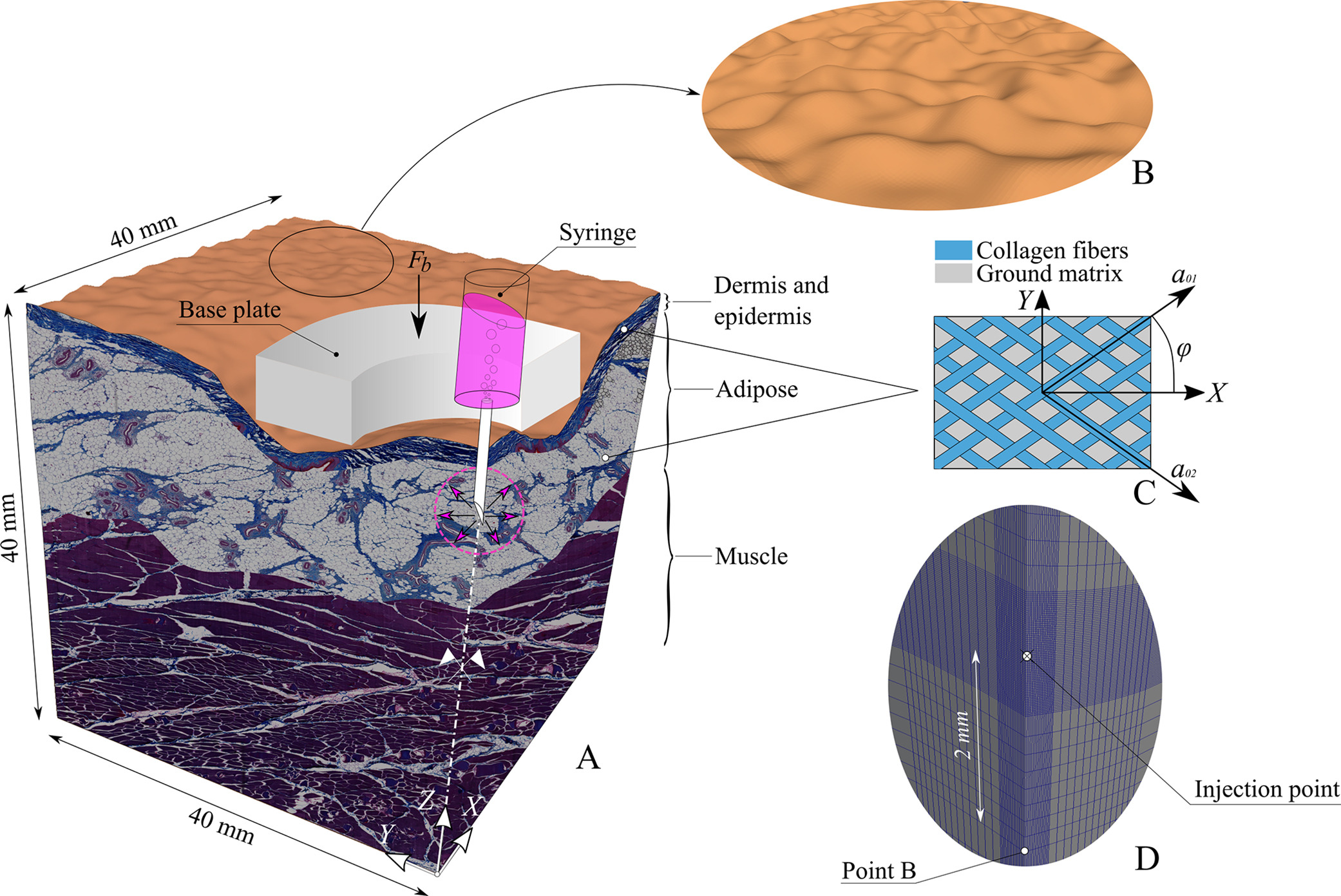 Mario de Lucio, Yu Leng, Atharva Hans, Ilias Bilionis, and 4 more authorsJournal of the Mechanical Behavior of Biomedical Materials, 2023
Mario de Lucio, Yu Leng, Atharva Hans, Ilias Bilionis, and 4 more authorsJournal of the Mechanical Behavior of Biomedical Materials, 2023Subcutaneous injection of therapeutic monoclonal antibodies (mAbs) has become one of the fastest-growing fields in the pharmaceutical industry. The transport and mechanical processes behind large volume injections are poorly understood. Here, we leverage a large-deformation poroelastic model to study high-dose, high-speed subcutaneous injection. We account for the anisotropy of subcutaneous tissue using a fibril-reinforced porohyperelastic model. We also incorporate the multi-layer structure of the skin tissue, generating data-driven geometrical models of the tissue layers using histological data. We analyze the impact of handheld autoinjectors on the injection dynamics for different patient forces. Our simulations show the importance of considering the large deformation approach to model large injection volumes. This work opens opportunities to better understand the mechanics and transport processes that occur in large-volume subcutaneous injections of mAbs.
@article{deLucio3, title = {Modeling large-volume subcutaneous injection of monoclonal antibodies with anisotropic porohyperelastic models and data-driven tissue layer geometries}, journal = {Journal of the Mechanical Behavior of Biomedical Materials}, volume = {138}, pages = {105602}, year = {2023}, issn = {1751-6161}, doi = {https://doi.org/10.1016/j.jmbbm.2022.105602}, url = {https://www.sciencedirect.com/science/article/pii/S1751616122005070}, author = {{de Lucio}, Mario and Leng, Yu and Hans, Atharva and Bilionis, Ilias and Brindise, Melissa and Ardekani, Arezoo M. and Vlachos, Pavlos P. and Gomez, Hector}, keywords = {Subcutaneous injection, Large-volume injection, Poroelasticity, Collagen fiber, Multilayered skin}, }
2022
-
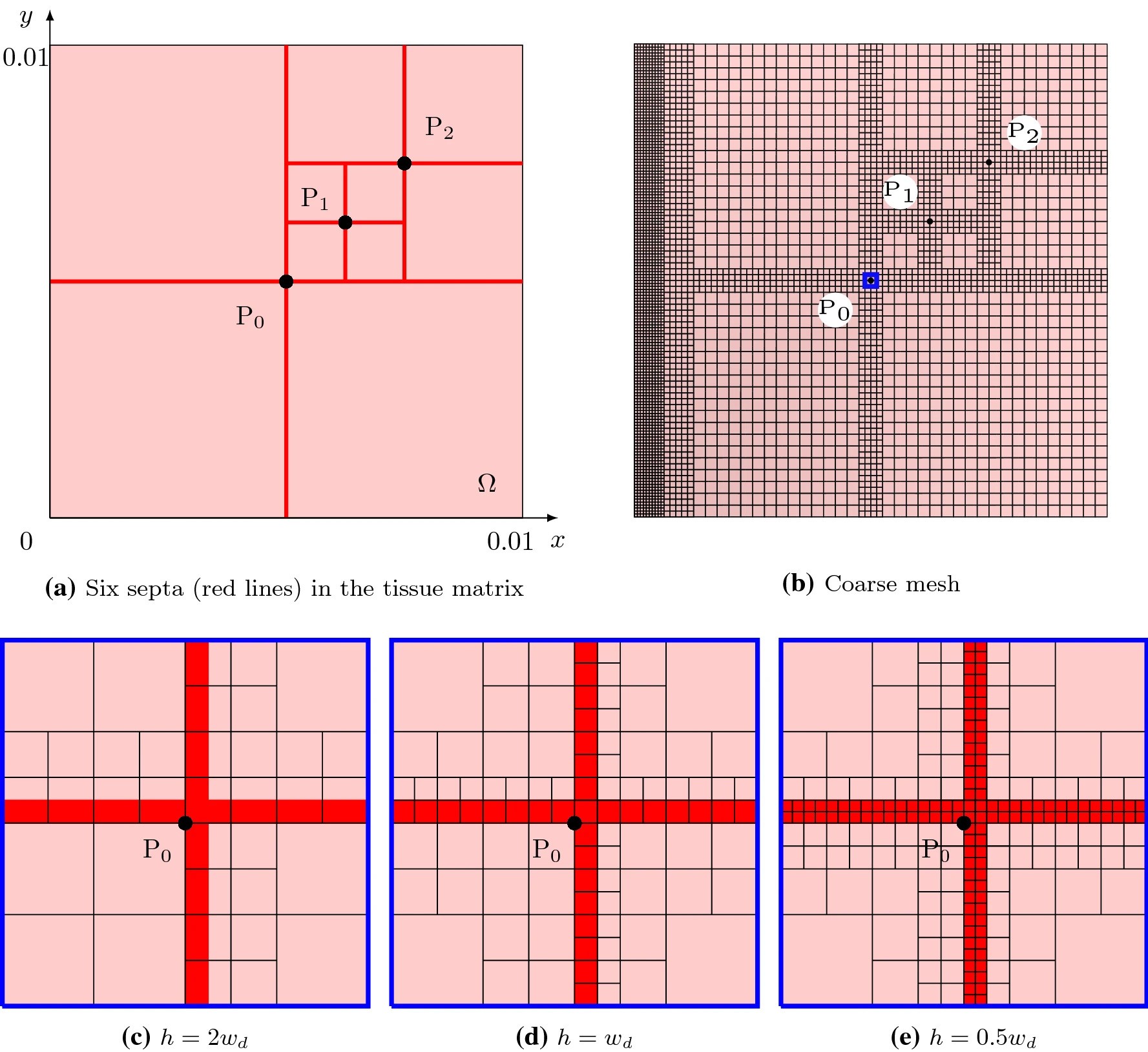 Yu Leng, Hao Wang, Mario de Lucio, and Hector GomezBiomech Model Mechanobiol, 2022
Yu Leng, Hao Wang, Mario de Lucio, and Hector GomezBiomech Model Mechanobiol, 2022Subcutaneous injection of therapeutic monoclonal antibodies (mAbs) has gained increasing interest in the pharmaceutical industry. The transport, distribution and absorption of mAbs in the skin after injection are not yet well-understood. Experiments have shown that fibrous septa form preferential channels for fluid flow in the tissue. The majority of mAbs can only be absorbed through lymphatics which follow closely the septa network. Therefore, studying drug transport in the septa network is vital to the understanding of drug absorption. In this work, we present a mixed-dimensional multi-scale (MDMS) poroelastic model of adipose tissue for subcutaneous injection. More specifically, we model the fibrous septa as reduced-dimensional microscale interfaces embedded in the macroscale tissue matrix. The model is first verified by comparing numerical results against the full-dimensional model where fibrous septa are resolved using fine meshes. Then, we apply the MDMS model to study subcutaneous injection. It is found that the permeability ratio between the septa and matrix, volume capacity of the septa network, and concentration-dependent drug viscosity are important factors affecting the amount of drug entering the septa network which are paths to lymphatics. Our results show that septa play a critical role in the transport of mAbs in the subcutaneous tissue, and this role was previously overlooked.
@article{Leng2, title = {Mixed-dimensional multi-scale poroelastic modeling of adipose tissue for subcutaneous injection}, journal = {Biomech Model Mechanobiol}, volume = {21}, pages = {1825--1840}, year = {2022}, issn = {}, doi = {https://doi.org/10.1007/s10237-022-01622-0}, author = {Leng, Yu and Wang, Hao and {de Lucio}, Mario and Gomez, Hector} }
2021
-
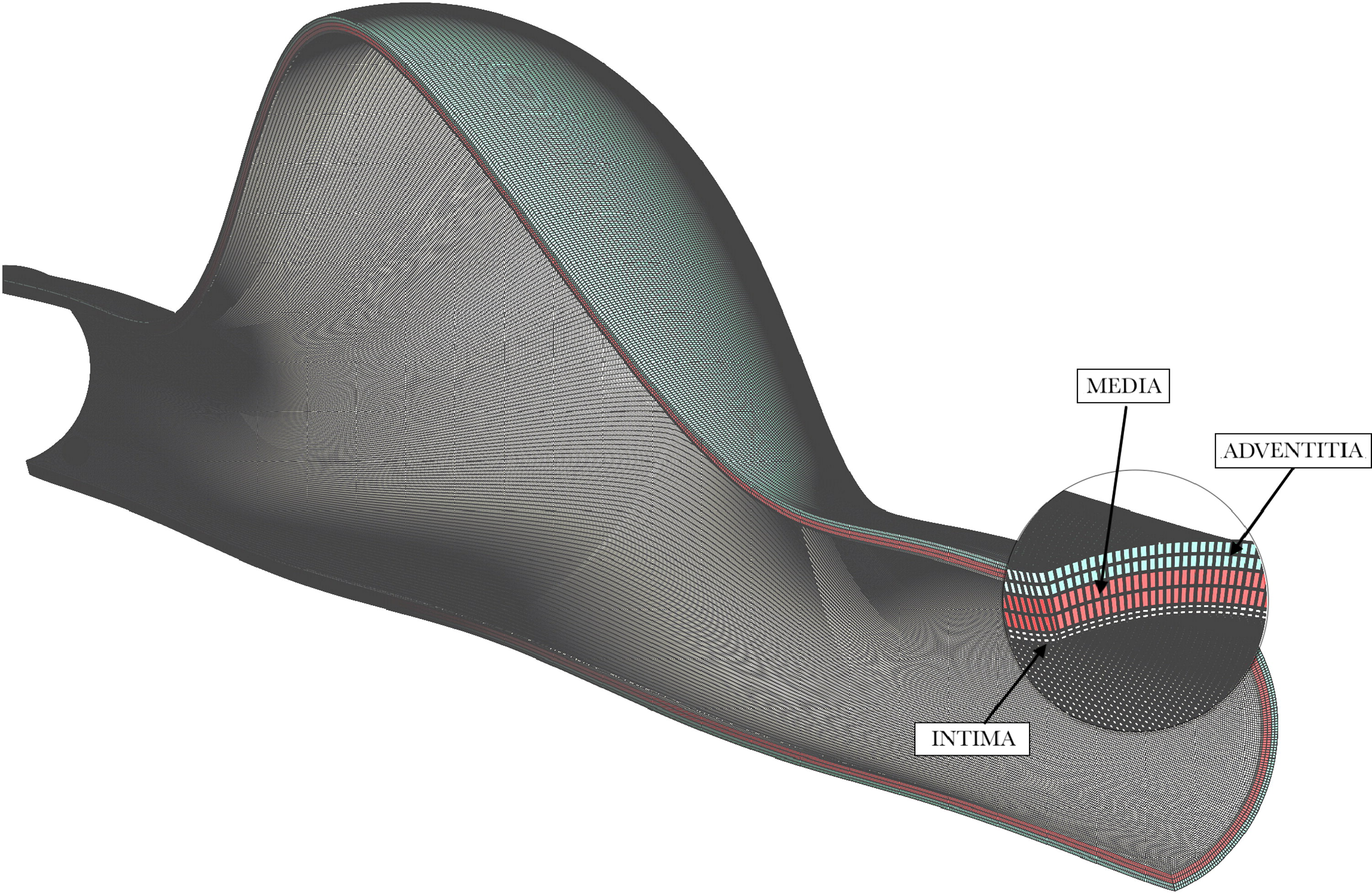 Mario de Lucio, Marcos Fernandez, Jacobo Diaz, Luis E. Romera, and 1 more authorComputer Methods in Biomechanics and Biomedical Engineering, 2021PMID: 33090043
Mario de Lucio, Marcos Fernandez, Jacobo Diaz, Luis E. Romera, and 1 more authorComputer Methods in Biomechanics and Biomedical Engineering, 2021PMID: 33090043Layer-specific experimental data for human aortic tissue suggest that, in aged arteries and arteries with non-atherosclerotic intimal thickening, the innermost layer of the aorta increases significantly its stiffness and thickness, becoming load-bearing. However, there are very few computational studies of abdominal aortic aneurysms (AAAs) that take into account the mechanical contribution of the three layers that comprise the aneurysmal tissue. In this paper, a three-layered finite element model is proposed from the simplest uniaxial stress state to geometrically parametrized models of AAAs with different asymmetry values. Comparisons are made between a three-layered artery wall and a mono-layered intact artery, which represents the complex behavior of the aggregate adventitia-media-intima in a single layer with averaged mechanical properties. Likewise, the response of our idealized geometries is compared with similar experimental and numerical models. Finally, the mechanical contributions of adventitia, media and intima are analyzed for the three-layered aneurysms through the evaluation of the mean stress absorption percentage. Results show the relevance and necessity of considering the inclusion of tunica intima in multi-layered models of AAAs for getting accurate results in terms of peak wall stresses and displacements.
@article{deLucio, author = {{de Lucio}, Mario and Fernandez, Marcos and Diaz, Jacobo and Romera, Luis E. and Alvarez, Francisco}, title = {On the importance of tunica intima in the aging aorta: a three-layered in silico model for computing wall stresses in abdominal aortic aneurysms}, journal = {Computer Methods in Biomechanics and Biomedical Engineering}, volume = {24}, number = {5}, pages = {467--484}, year = {2021}, publisher = {Taylor \& Francis}, doi = {10.1080/10255842.2020.1836167}, note = {PMID: 33090043}, url = {https://doi.org/10.1080/10255842.2020.1836167} } -
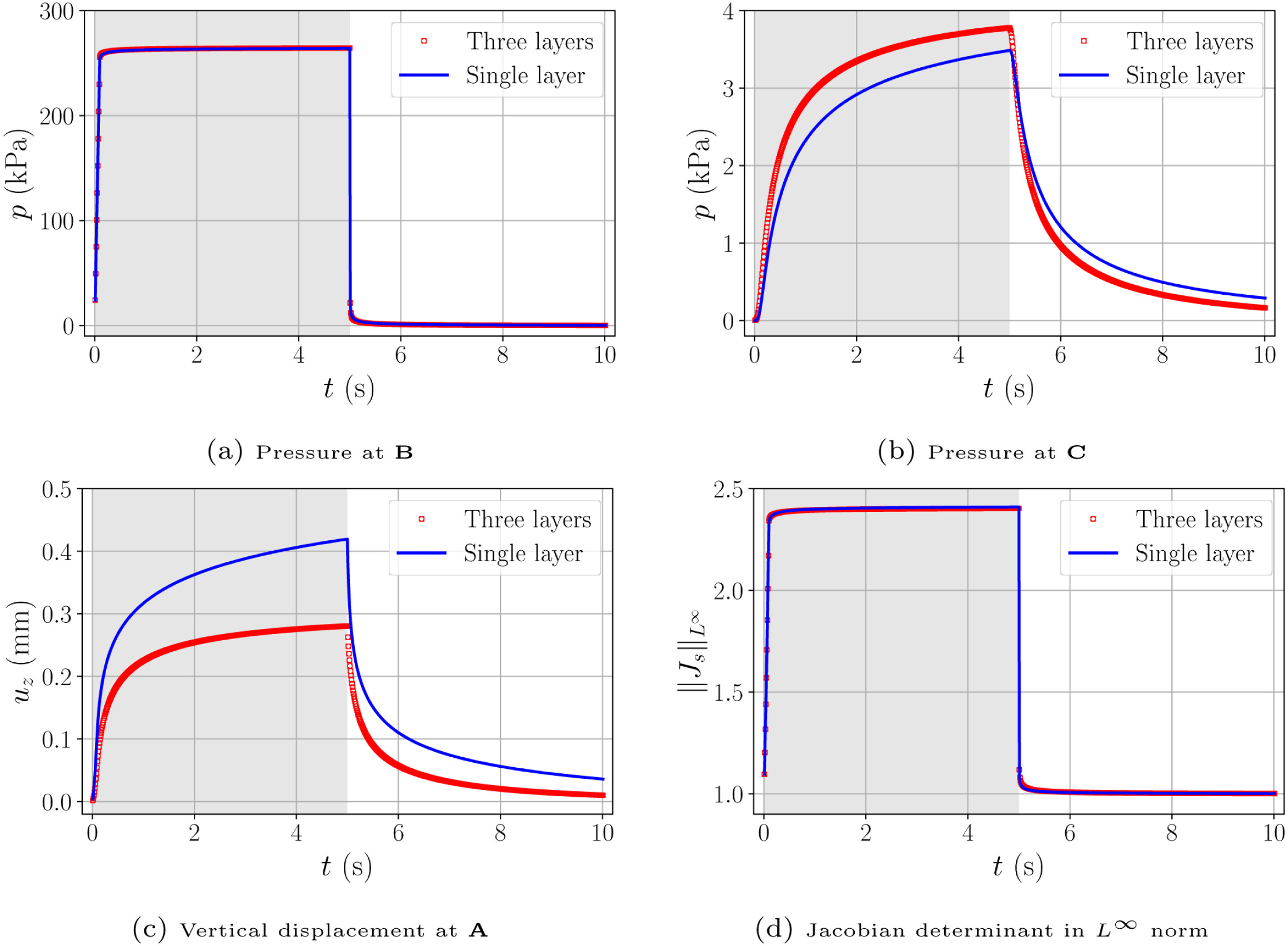 Yu Leng, Mario de Lucio, and Hector GomezComputer Methods in Applied Mechanics and Engineering, 2021
Yu Leng, Mario de Lucio, and Hector GomezComputer Methods in Applied Mechanics and Engineering, 2021Subcutaneous injection of therapeutic monoclonal antibodies (mAbs) has recently attracted unprecedented interest in the pharmaceutical industry. The drug transport in the tissue and mechanical response of the tissue after injection are not yet well-understood. We are motivated to study subcutaneous injection using poro-elasticity, including linear and nonlinear poro-elastic models. We first present the fixed-stress split of the nonlinear model and perform convergence studies under spatial and temporal refinements. We then investigate the model assumption of the linear model using numerical solutions. In the case of small permeability, the linear model is not adequate to account for the large deformation of the tissue due to injection. Next, we adopt a nonlinear poro-elastic model to study subcutaneous injection. For large deformation, numerical solutions of the nonlinear model differ significantly from that of the linear model, especially near the injection site.
@article{Leng1, title = {Using poro-elasticity to model the large deformation of tissue during subcutaneous injection}, journal = {Computer Methods in Applied Mechanics and Engineering}, volume = {384}, pages = {113919}, year = {2021}, issn = {0045-7825}, doi = {https://doi.org/10.1016/j.cma.2021.113919}, url = {https://www.sciencedirect.com/science/article/pii/S0045782521002565}, author = {Leng, Yu and {de Lucio}, Mario and Gomez, Hector}, keywords = {Subcutaneous injection, Nonlinear poro-elasticity, Fixed-stress split, Large deformation, Finite element method} } -
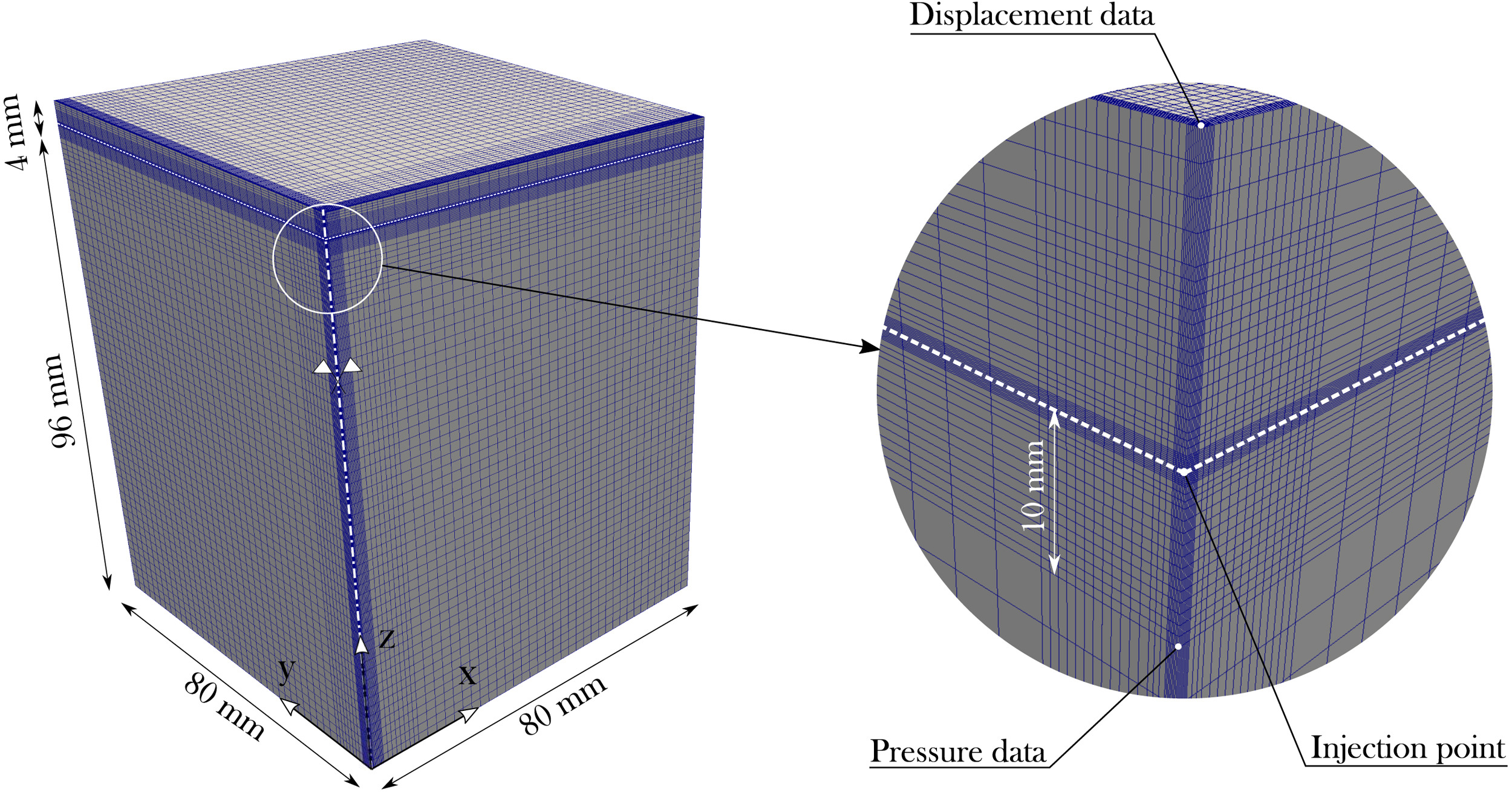 Mario de Lucio, Miguel Bures, Arezoo M. Ardekani, Pavlos P. Vlachos, and 1 more authorComputer Methods in Applied Mechanics and Engineering, 2021
Mario de Lucio, Miguel Bures, Arezoo M. Ardekani, Pavlos P. Vlachos, and 1 more authorComputer Methods in Applied Mechanics and Engineering, 2021Subcutaneous injection for self-administration of biotherapeutics, such as monoclonal antibodies, has emerged as a fast-growing field in the pharmaceutical industry. Effective drug delivery in the subcutaneous tissue critically depends on the coupled mechanical and transport processes occurring in the tissue during and after the injection. The details of these processes, however, remain poorly understood; and this explains the growing interest in computational approaches. Notably, there are very few computational studies on subcutaneous injection into three-dimensional porous media that account for tissue deformability. Here, we leverage a poroelastic model to analyze the response of subcutaneous tissue under the flow of a pressurized fluid. We propose a computational method based on Isogeometric Analysis that exploits the global continuity of splines. Our model shows the importance of considering tissue deformation and permeability changes in order to obtain more realistic results in terms of fluid pressure and velocity, during and after the injection.
@article{deLucio2, title = {Isogeometric analysis of subcutaneous injection of monoclonal antibodies}, journal = {Computer Methods in Applied Mechanics and Engineering}, volume = {373}, pages = {113550}, year = {2021}, issn = {0045-7825}, doi = {https://doi.org/10.1016/j.cma.2020.113550}, url = {https://www.sciencedirect.com/science/article/pii/S0045782520307350}, author = {{de Lucio}, Mario and Bures, Miguel and Ardekani, Arezoo M. and Vlachos, Pavlos P. and Gomez, Hector}, keywords = {Subcutaneous injection, Poroelasticity, Isogeometric analysis}, }
2020
-
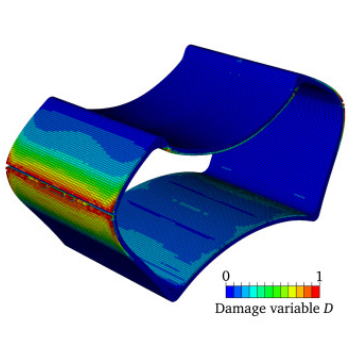 Miguel Costas, David Morin, Mario de Lucio, and Magnus LangsethEuropean Journal of Mechanics - A/Solids, 2020
Miguel Costas, David Morin, Mario de Lucio, and Magnus LangsethEuropean Journal of Mechanics - A/Solids, 2020An experimental and numerical study on the quasi-static loading of AlSi10Mg square boxes produced by selective laser melting (SLM) was carried out. The goal was to evaluate the applicability of common finite element modelling techniques to 3D-printed parts at material and component scales, under large deformations and fracture. Uniaxial tensile specimens were extracted and tested at different orientations, and a hypo-elastic–plastic model with Voce hardening and Cockcroft–Latham’s fracture criterion was calibrated against the experimental results. The boxes were crushed laterally until failure using a spherical actuator. The considered material and finite element models were proved well suited for the prediction of the structural response of the additively manufactured components in the studied scenario.
@article{COSTAS2020103966, title = {Testing and simulation of additively manufactured AlSi10Mg components under quasi-static loading}, journal = {European Journal of Mechanics - A/Solids}, volume = {81}, pages = {103966}, year = {2020}, issn = {0997-7538}, doi = {https://doi.org/10.1016/j.euromechsol.2020.103966}, url = {https://www.sciencedirect.com/science/article/pii/S0997753819306758}, author = {Costas, Miguel and Morin, David and {de Lucio}, Mario and Langseth, Magnus}, keywords = {Additive manufacturing, AlSi10Mg, 3D-printed aluminium, Lateral crushing, Finite elements}, } -
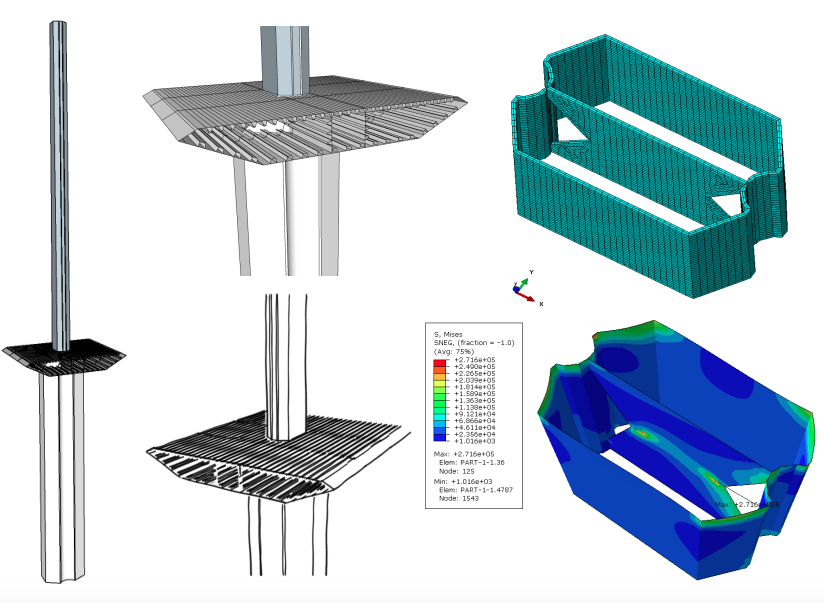 Mario de Lucio, and Arturo AntónRevista de Obras Públicas: Organo profesional de los Ingenieros de Caminos, Canales y Puertos, 2020
Mario de Lucio, and Arturo AntónRevista de Obras Públicas: Organo profesional de los Ingenieros de Caminos, Canales y Puertos, 2020The new bridge over Santoña bay has a total length of 890 m and crosses from the city of Laredo to Santoña. The main stretch is a cable-stayed deck with a 200 m main span, 90 m side span and a vertical clearance for navigational purposes of 28 m. The simply supported steel deck is being built by segments incrementally launched from both sides. With that purpose, the launching process has been optimized so that its own cable stayed support system compensates the forces generated during construction. The conception of this new bridge aims at establishing a new valuable bond between Laredo and Santoña while at the same time achieving an adequate integration of the structure in the estuary.
@article{delucio2020puente, title = {Proyecto constructivo del nuevo puente de carretera para la unión de las villas de Laredo y Santoña (Cantabria)}, author = {{de Lucio}, Mario and Antón, Arturo}, journal = {Revista de Obras Públicas: Organo profesional de los {I}ngenieros de {C}aminos, {C}anales y {P}uertos}, issn = {0034-8619}, number = {3619}, year = {2020}, pages = {70-79}, language = {español}, url = {https://dialnet.unirioja.es/servlet/articulo?codigo=7486537}, }
2018
-
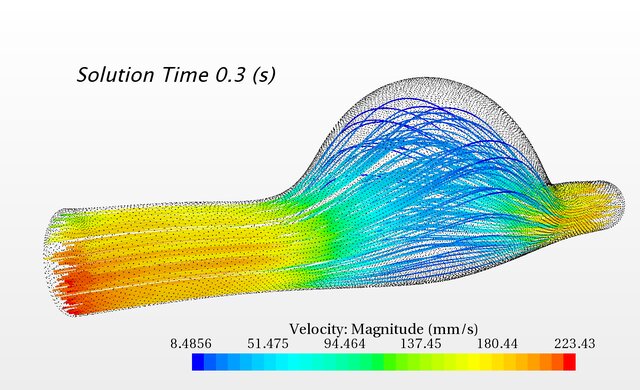 Mario de LucioUniversidade da Coruna , 2018
Mario de LucioUniversidade da Coruna , 2018An abdominal aortic aneurysm is a localized bulge or swelling in the lower part of the aorta, the main blood vessel of the human body that goes from the left ventricle of the heart down through the chest and the tummy, where it splits in two smaller vessels called iliac arteries. They usually remain asymptomatic until rupture, which makes them a life-threatening disease with an overall mortality of more than 80%. Layer-specific experimental data for human aortic tissue suggest that, in aged arteries and arteries with non-atherosclerotic intimal thickening, the innermost layer of the aorta increases significantly its stiffness and thickness, becoming load-bearing. However, there are very few computational studies of aortic abdominal aneurysms (AAAs) that take into account the mechanical contribution of the three layers that make up the aneurysmal tissue. In this technical project, a three-layered finite element model is proposed from the simplest (uniaxial) stress state, to geometrically parametrized models of AAAs with different asymmetry values. Comparisons are made between a three-layered artery wall, and a mono-layered intact artery, whose constitutive parameters stand for the mean mechanical behavior of the three layers. Likewise, the response of our idealized geometries is compared with similar models. The mechanical contributions of adventitia, media and intima, are also analyzed for the three-layered aneurysms through the evaluation of the mean stress absorption percentage. Results show the relevance of considering the inclusion of tunica intima in multi-layered models of AAAs for getting more accurate results in terms of peak wall stresses and displacements. The last part of this investigation contains a Fluid-Structure Interaction study in parametrized abdominal aortic aneurysms, considering a hyperelastic anisotropic constitutive law for the aneurysmal wall. Because of the high computational cost that it would attain to model a full cardiac cycle in a three-layered aneurysm considering the Fluid-Structure Interaction, only a mono-layered aneurysm is simulated within this final part of the project. As in the previous section, comparisons are made between elastic, hyperelastic isotropic and hyperelastic anisotropic artery walls in terms of stresses and displacements.
@mastersthesis{deLucio2018, title = {A multi-layered in-silico model for rupture risk assessment of abdominal aortic aneurysms with non-atherosclerotic intimal thickening}, author = {{de Lucio}, Mario}, year = {2018}, school = {Universidade da Coruna}, url = {https://www.researchgate.net/publication/329707429_A_multi-layered_in-silico_model_for_rupture_risk_assessment_of_abdominal_aortic_aneurysms_with_non-atherosclerotic_intimal_thickening} }
